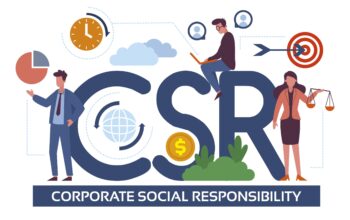Workplace Equality for Women: Know Your Rights
Introduction
The status of women’s rights in India has witnessed notable progress in recent years. However, within the workplace, women still encounter specific challenges and barriers. This comprehensive guide delves into the state of women’s rights in the Indian workplace, examining the legal framework, prevailing issues, and initiatives promoting gender inclusivity. By gaining insights into these aspects, businesses and policymakers can collaboratively strive to create a more equitable and empowering work environment for women in India.
Table of Contents
I. The Legal Framework for Women’s Rights in Indian Workplaces
1.1. The Constitution of India and Gender Equality
1.1. The Constitution of India and Gender Equality The Indian Constitution forms a robust foundation for gender equality. It explicitly prohibits discrimination based on sex under Article 15 and directs the adoption of policies that promote equal opportunities for men and women through Article 39.
1.2. Maternity Benefits Act
The Maternity Benefits Act ensures women’s rights to paid maternity leave and job protection during pregnancy and after childbirth. This act aims to safeguard women’s reproductive rights and prevent discrimination arising from maternity.
1.3. Sexual Harassment at Workplace
The Sexual Harassment of Women at Workplace (Prevention, Prohibition, and Redressal) Act, 2013, establishes a legal framework to address workplace harassment. It mandates the formation of Internal Complaints Committees (ICCs) in organizations to handle complaints effectively.
Read more: Understanding Harassment Law in India
II. Challenges Faced by Women in the Indian Workplace
2.1. Gender Bias and Stereotyping
Gender bias and stereotypes persist in Indian workplaces, adversely affecting women’s career growth and opportunities. These biases often lead to limited access to leadership positions and contribute to the gender pay gap.
2.2. Work-Life Balance
Balancing work and personal responsibilities poses challenges for women, particularly within traditional family structures. The lack of flexible work arrangements can impact women’s participation and retention in the workforce.
2.3. Lack of Representation in Leadership
The underrepresentation of women in leadership roles and corporate boards hampers diversity and inclusivity. Initiatives promoting women’s leadership development and mentorship are essential in addressing this issue.
III. Promoting Women’s Rights and Inclusivity in Indian Workplaces
3.1. Gender Sensitization and Training
Conducting regular gender sensitization workshops and training programs for employees fosters awareness and a more respectful work environment.
3.2. Implementing Diversity and Inclusion Policies
Comprehensive diversity and inclusion policies that promote gender equality and equal growth opportunities for all employees are vital for organizational progress.
3.3. Encouraging Mentorship and Sponsorship
Establishing mentorship and sponsorship programs can aid women in navigating their careers, building professional networks, and accessing growth opportunities.
3.4. Supporting Work-Life Balance Initiatives
Offering flexible work arrangements, childcare support, and parental leave policies can facilitate better work-life balance for women employees.
IV. Success Stories and Best Practices
4.1. Leading by Example – Progressive Companies
Highlighting success stories of companies with effective gender-inclusive policies can serve as inspiration for others to follow suit.
4.2. Government Initiatives
Discussing government-led initiatives to promote women’s rights within the workplace raises awareness about ongoing efforts to achieve gender equality.
V. Conclusion
Ensuring a conducive work environment that upholds women’s rights and promotes gender equality is not only a legal obligation but also a moral imperative. By addressing challenges, implementing inclusive policies, and fostering a culture of respect, Indian workplaces can become more empowering spaces for women, driving economic growth and social progress for the nation as a whole. Together, businesses, policymakers, and society can usher in a new era of gender equality within the Indian workforce.
Frequently Asked Questions (FAQs)
1. What are the legal protections available for women in Indian workplaces?
Indian workplaces provide legal safeguards against discrimination and harassment. The Constitution (Article 15) prohibits gender-based bias, and Article 39 ensures equal opportunities for men and women. The Maternity Benefits Act offers paid maternity leave and job protection, while the Sexual Harassment at Workplace Act (2013) addresses harassment issues.
2. How does gender bias impact women in Indian workplaces?
Gender bias and stereotypes can hinder women’s progress, limiting access to leadership roles and contributing to the gender pay gap. It’s crucial to address these biases for a fair work environment.
3. What challenges do women face in balancing work and personal life in India?
Juggling work and personal responsibilities is tough, especially in traditional family setups. Lack of flexible work options affects women’s participation and retention in the workforce.
4. How can companies promote gender inclusivity?
Companies can promote gender inclusivity through gender sensitization workshops, diversity policies, mentorship programs, and work-life balance support. Building an inclusive culture is key to achieving gender equality.
5. Why is it essential to have women in leadership roles within organizations?
Having women in leadership enriches diversity, decision-making, and inspires other women. It paves the way for better gender representation and progress.
6. Are there any success stories of gender-inclusive policies in Indian companies?
Absolutely! Several Indian companies have implemented successful gender-inclusive policies, leading to improved gender representation and overall growth.
7. How do government initiatives contribute to promoting women’s rights in the workplace?
Government initiatives create awareness, offer guidelines, and implement policies to foster gender equality and inclusivity in workplaces.
8. How can organizations address workplace harassment effectively?
Setting up Internal Complaints Committees (ICCs) is essential to handle harassment complaints. Regular training on prevention and addressing such issues is crucial.
9. Why is gender diversity vital for organizational success?
Gender diversity brings diverse perspectives, problem-solving abilities, creativity, and a broader talent pool. It strengthens organizations to thrive in a dynamic environment.
10. What can individuals do to promote women’s rights in workplaces?
Individuals can support gender-inclusive policies, be aware of their biases, advocate for equal opportunities, and foster a respectful work culture valuing diversity and women’s contributions.
Read more : Let Know About The Rights Of An Arrested Person
- 20 July 2023
- Written By Archana Hayaran
- Associate Client Relationship
- Review By: Advocate Anupam Agrawal




